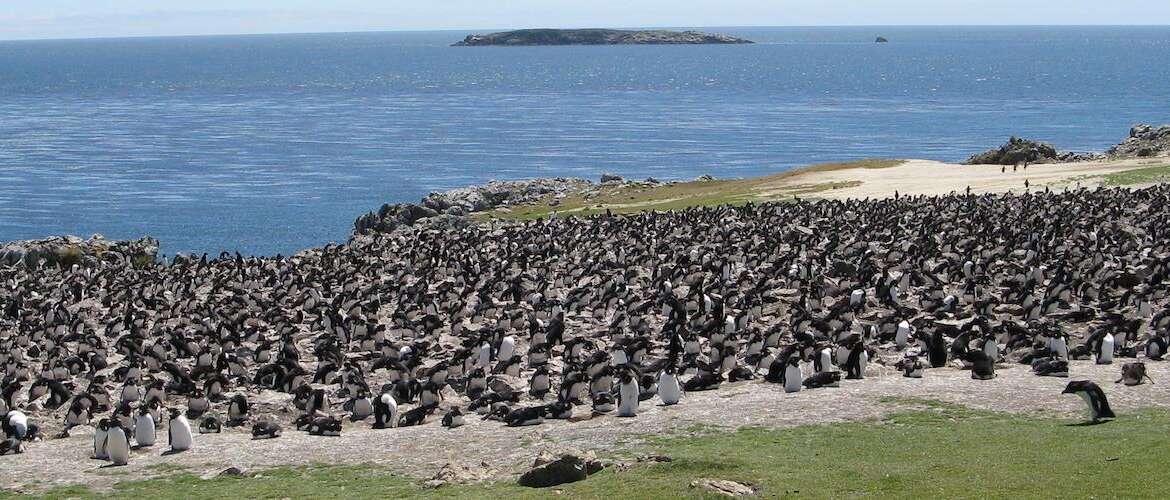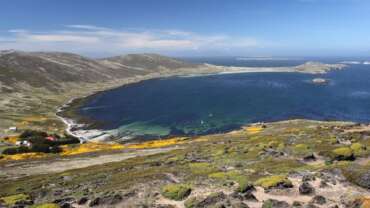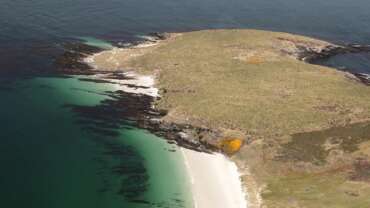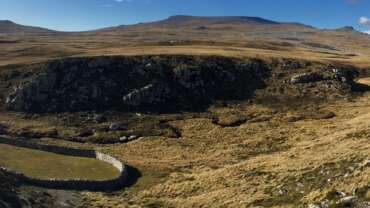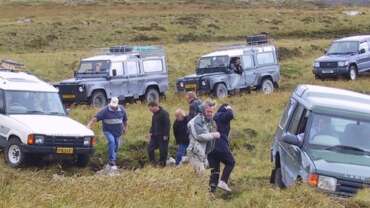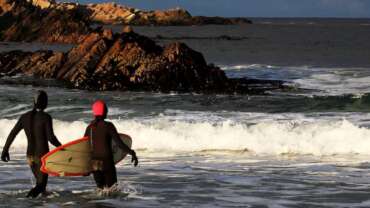East Falkland
East Falkland is home to the Islands’ capital, Stanley, as well as many other interesting settlements and lots of lovely areas of coastline. Some places are easy day trips from Stanley but many are worth a longer stop-over to allow more time for exploration.
Many settlements on East Falkland have established accommodation, from remote cottages to well-provisioned lodges. Itineraries can be easily designed to include as many nights as you may need to enjoy an area that appeals to you.
East Falkland can be broadly divided into two areas separated by an isthmus. Each area is distinctly different; each has a range of attractions and activities.
“Camp” is the word used to describe all the land outside Stanley, from the Spanish word for countryside “campos”. It’s a word that visitors will often hear and helps to understand both the geography and some social aspects of the Islands.
The “North Camp” is a scenic, hilly area, characterised by beautiful white sand beaches, stone runs and a range of hills, Wickham Heights, which includes the Falklands’ highest peak, Mount Usborne, at 705m (2,312 feet). Settlements nestle along the coastline and there is a variety of wildlife.
The Great Plain of Lafonia lies to the south of the isthmus, a flat, open area of land with glorious golden hues and open skies creating landscapes of contrasting colours. Settlements are sparse and the best wildlife is at the most southerly point. Lafonia has much historical interest.
Travel around East Falkland is generally by road though some settlements do operate airstrips and can be reached using the Falkland Islands Government Air Service (FIGAS). Off-roading is not usually permitted with hire vehicles but local guides provide trips to many places of interest. Their driving skills along with accompanying commentary and anecdotes bring to life trips to remote locations.
North Camp
The North Camp of East Falkland, strictly speaking, is the area north of a range of hills known as the Wickham Heights. There are many places to visit as easy day-trips from Stanley, but why not stay a while longer to soak up the experiences on offer?
Johnson’s Harbour is a pretty settlement of typical white washed, red-roofed buildings. Off-road tracks lead to Volunteer Point, home to the largest colony of king penguins on the Islands. This “must-see” wildlife site has a lovely long white sand beach as well as a fantastic range of birdlife, with the sights, sounds and scents of the king penguins a highlight.
To the north-west lie the settlements of Elephant Beach and Port San Carlos. Elephant Beach is situated on the edge of the Cape Dolphin peninsula with splendid sandy beaches, rocky shores, blowholes and caves. Ponds of varying sizes are scattered across the land. There is wildlife aplenty including sea lions, various species of birds and sometime dolphins.
Port San Carlos is an excellent place for keen hikers and birders. Waterbirds swim on Paloma ponds; gentoo and Magellanic penguins inhabit the beautiful Paloma Beach whilst rockhopper penguins are on the rocky outcrop of Fanning Head.
South of the hills is San Carlos. A small museum gives an insight into the role of the settlement in the 1982 war and the cemetery corral is a pause for quiet reflection and a chance to pay respects to those who gave their lives. San Carlos has a café and the chance to try your hand at painting ceramics.
Fitzroy and Bertha’s Beach make a great day trip from Stanley. Fitzroy has memorials for the 1982 war and the beach is a long stretch of white sand with abundant wildlife including waterbirds, gentoo and Magellanic penguins.
Accommodation is available at all the settlements and there are a variety of places at which to stay including Darwin House in Darwin, the only serviced accommodation available.
Self-catering is offered at James Cabin at Elephant Beach, White Grass Cottage at San Carlos, Racepoint Farm Cottage and Racepoint Farm Flat at Port San Carlos, and Johnson’s Harbour Cottage at Johnson’s Harbour.
Lafonia
The East Falkland isthmus is the gateway to the southern area known as Lafonia, named after the Lafone brothers, traders of the mid-1800s. In the early days of cattle ranching, the brothers set up a salting works at Saladero. Today this government-owned farm is the location of agricultural department trials. Visitors are welcome by advance arrangement and the annual ram show takes place here.
Darwin and neighbouring Goose Green are the two main settlements in the north part of Lafonia. Easily reached from the international airport at Mount Pleasant, this area is a gentle introduction for the wildlife enthusiast. Southern giant petrel, Magellanic oystercatchers, skuas, ruddy-headed geese, kelp geese, upland geese and the Falklands flightless steamer duck are easily seen and occasionally the chiloe widgeon.
For the historian there is much to see, from the carefully reconstructed stone corral at Darwin to the trail of the 1982 war including many British memorials and the Argentine cemetery. Views in all directions are glorious, to the flat plateau of Mount Usborne, the highest point at 705m (2,312 feet) and across the sparkling bays. Accommodation and food are available at both Darwin House and Goose Green café.
Travel south, across the beautiful open plains. White grass is the dominant feature but takes on a stunning array of golden hues throughout the day. North Arm settlement is located in the southern part of Lafonia. It has an excellent little museum, packed with artefacts of Falkland farming and camp life. North Arm Farm offers accommodation at Kiwi Cottage and George House for intrepid travellers who wish to get a feel of real Falklands’ life; simple, clean and comfortable.
North Arm and Goose Green are the Falklands’ largest farms. Sheep shearing takes place in summer months and can usually be viewed with the farm manager’s permission. The area is also great for casual fishing; seek advice from the farm manager first.



